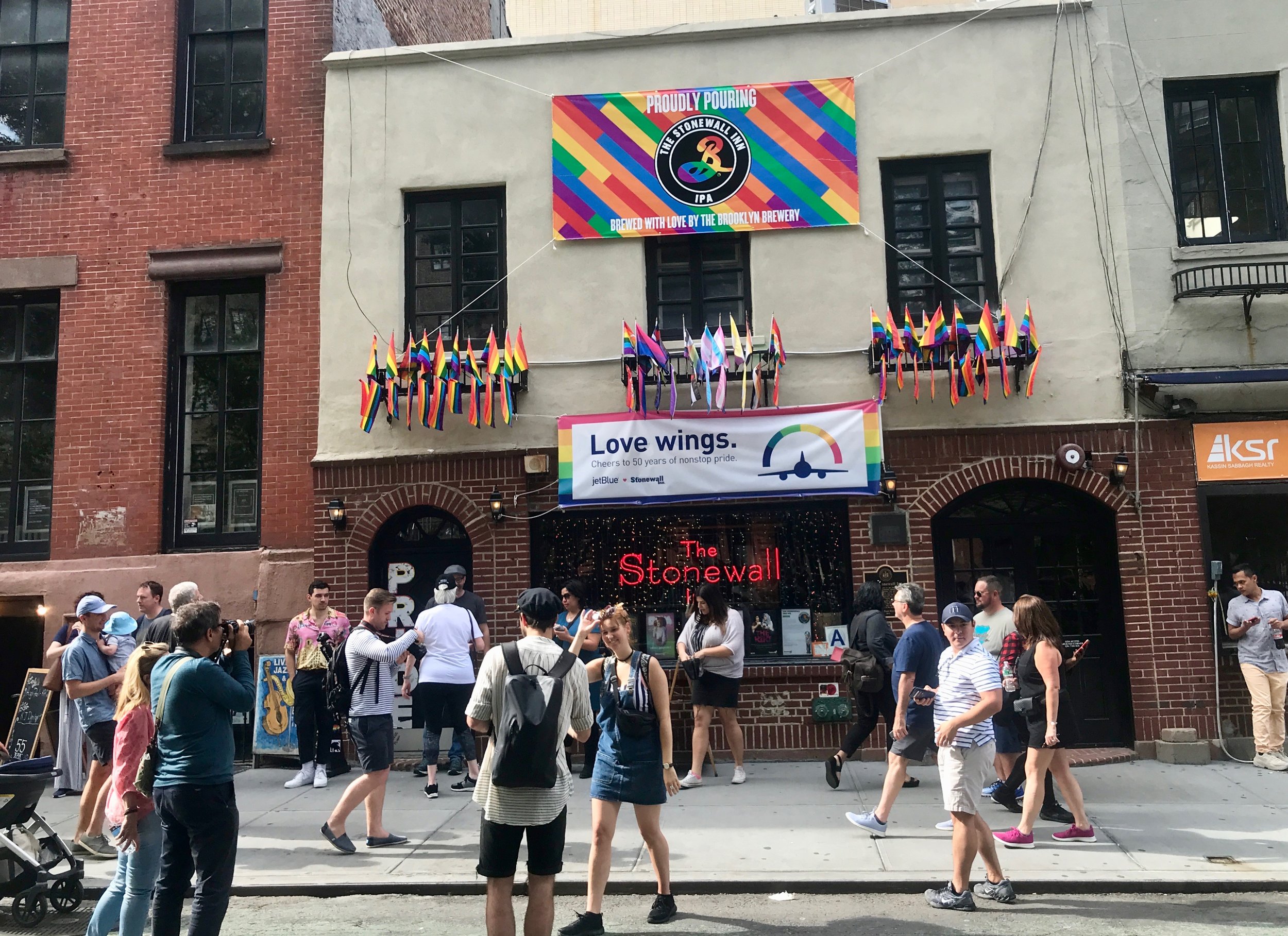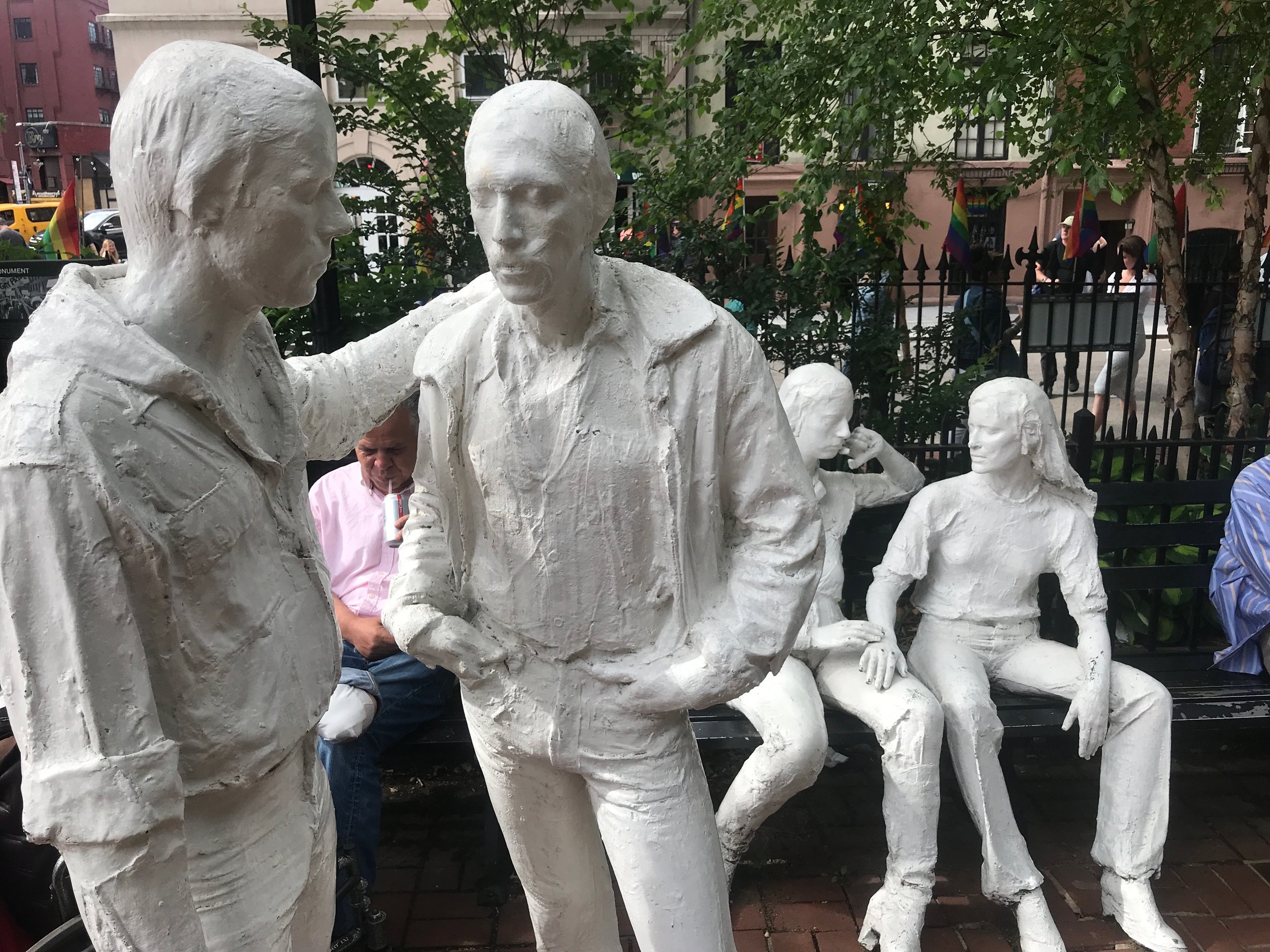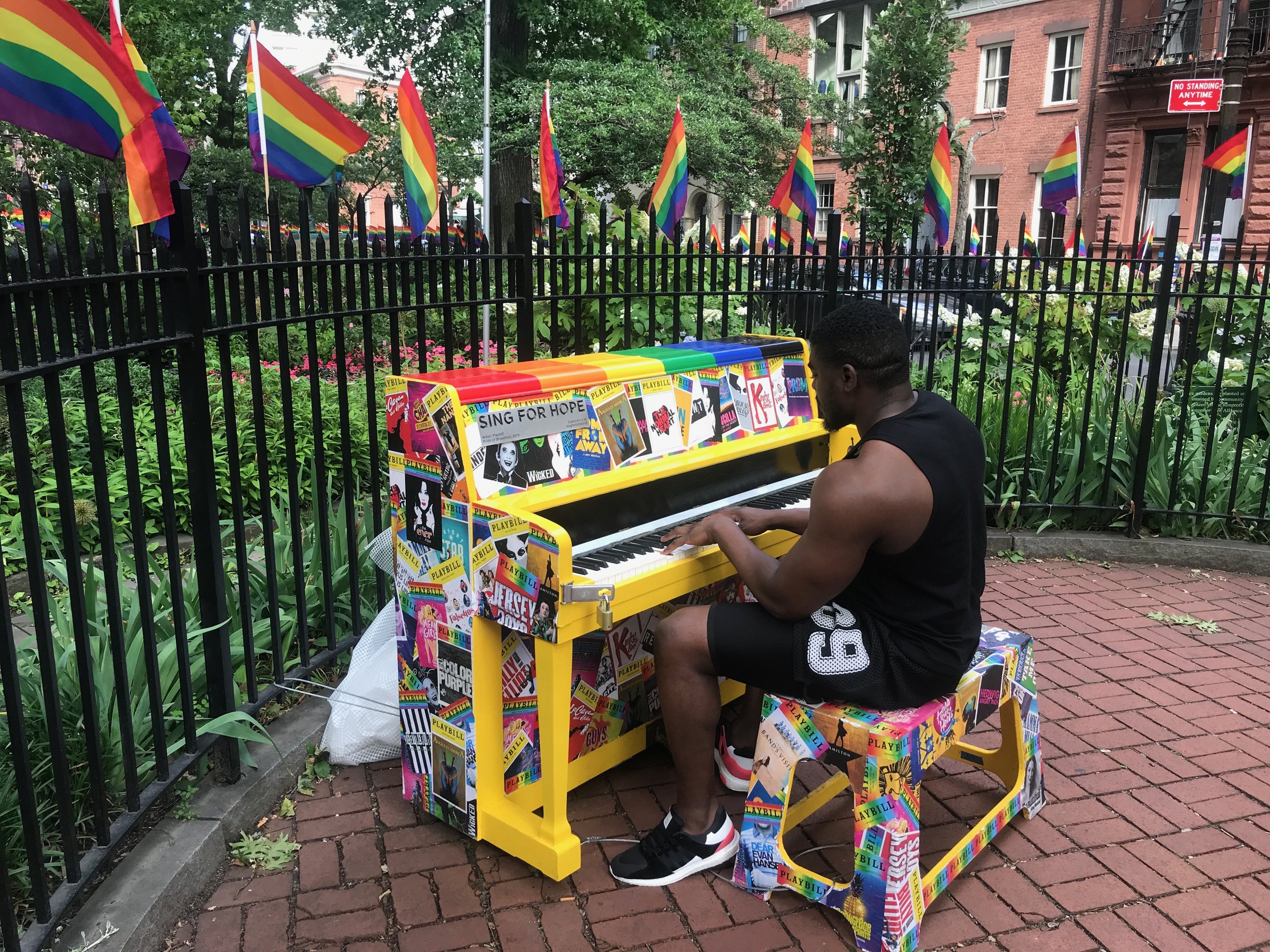A riot to be proud of
Revisiting Stonewall, 50 years later
By Rick Holmes
New York – The Stonewall Inn is an unlikely icon in the annals of freedom.
In the summer of 1969, it was just another sleazy bar in Greenwich Village.
Owned by the Mafia, it operated without a liquor license or health inspections, subject to occasional police raids that were quickly settled through police payoffs. The Stonewall sold watered-down drinks for high prices to a clientele that had almost nowhere else to go. Its customers were gay men, including those at the disreputable edge of what was then a disreputable class: drag queens, male prostitutes, transgender people.
As a bar, the Stonewall was the pits, customers from that era recall, but it was a haven from a harsh world that had no place for them. They found friends and acceptance at the Stonewall, connections and sometimes a place to sleep in Sheridan Square, the small, triangle-shaped park across the street, furtive sex at the abandoned docks a few blocks west.
It was hard being gay 50 years ago, wherever you lived. Being exposed as gay could get you fired from your job, kicked out of your housing, stripped of your professional license or dishonorably discharged from the military. Most hid in the closet for fear of losing their families, friends and livelihoods.
Worst was the shame. People were told they were sick sexual perverts, a danger to children. They were forced into psychiatric therapies, even lobotomized, in hopes of “curing” their homosexuality.
This all may sound strange to those born in a more enlightened age. But in 1969, homosexual acts were illegal in 49 out of 50 states. In New York, you could be arrested simply for sitting in a bar with known homosexuals. Under the city’s liquor regulations, a bar could lose its license for serving a single homosexual patron. Under an 1845 law used to harass cross-dressers, you could be arrested for being seen in public wearing fewer than three items of clothing appropriate to your birth gender.
For decades, officials mostly looked the other way as gay people were drawn to the relative tolerance of city neighborhoods like Greenwich Village. But in the years after World War II, America grew less tolerant. The witch hunts led by Sen. Joe McCarthy targeted gays as well as Communists, on the strange logic that their orientation made them vulnerable to blackmail by Communists. In what became known as the Lavender Scare, 425 State Department employees were fired after allegations of homosexuality. President Dwight Eisenhower issued and executive order that caused 5,000 other gay federal employees to be fired.
In New York, image-conscious mayors sent the police after the “queers” – a pejorative term then, since claimed by non-heterosexuals as a badge of honor. They raided the downtown docks and other public places where gay men played. The NYPD’s Public Morals Squad – yes, there was a division specifically charged with policing morality – went after the gay bars of Greenwich Village.
Their June 28 raid on the Stonewall Inn was typical, except that mob-owned bars were usually raided on weeknights, so they could quietly reopen by the weekend. The Stonewall was raided late on a Saturday night, when the bar and the streets outside were crowded. The cops declared the business closed, and checked the IDs of most customers before letting them leave. Those dressed in drag were taken to the bathroom by female officers, who stripped or groped them to discover if their clothing matched the organs underneath. They mostly didn’t, so the drag queens were marched into paddy wagons parked outside.
What happened next wasn’t typical. The crowds out on Christopher Street jeered and ridiculed the police. They threw pennies, showing the “coppers” how little they were worth. Someone threw a shot glass at the bar’s mirror and things got uglier. The police retreated, locking themselves in the bar, but soon reinforcements arrived. This time, instead of running from the police, the crowd mocked them, setting up a Rockettes-style chorus line and chanting “We are the Village girls.” The police responded with billy clubs, but the crowds didn’t disperse. They just ran around the block and continued their taunting. The Stonewall Uprising was on.
The rest is history. The crowds and the cops were back at it the next night, and for several nights after that. Few paid attention at first, with minimal media coverage given to the skirmishes in the Village, but a spark had been lit. Gay New Yorkers who had mostly wanted to be left alone found strength in fighting together, and the word spread to LGBT communities in other cities.
On the one-year anniversary of the Stonewall riots, gay advocates in New York held a rally and march demanding “gay liberation,” with similar events held in Chicago, Los Angeles and San Francisco. They grew into Pride parades, the centerpiece of LGBT celebrations in thousands of cities in the U.S. and around the world.
There’s been some silly talk this year about holding “straight pride” parades. There’s always been tut-tutting from some that what you do in the bedroom is nothing to take pride in. They miss the point. The opposite of pride is shame, and those who have never been made to feel ashamed – of who they are, who they love or who they are attracted to – have no need to compensate by announcing their pride.
Today, the Stonewall Inn – still a bar, though a much more reputable one – is festooned with rainbow flags and surrounded by tourists taking selfies. The small park across the street is the center of the Stonewall National Monument, so designated by Barack Obama, with National Park Service rangers on hand daily to explain what happened here 50 years ago. Folks of every nationality and gender orientation share laughs on its benches. People take turns playing show tunes on a rainbow-painted upright piano.
New York, hosting World Pride this year, expects 6 million visitors to join the party. On the eave of the celebrations, the city’s top law enforcement official came to the Village to apologize for the oppressive laws and the actions of his department 50 years ago.
Shame is still a problem, especially for queer young people. Suicide rates are significantly higher among LGBTQ youth than their peers. But they have fallen since Pride parades became common and same-sex marriage became legal and accepted. Those who declared “no more” on the streets outside Stonewall – and the millions of brave people who joined them in the half-century since – have a lot to be proud of.
Rick Holmes can be reached at rick@rickholmes.net. You can follow his journey at www.rickholmes.net. Like him on Facebook at Holmes & Co, and follow him on Twitter @HolmesAndCo.


